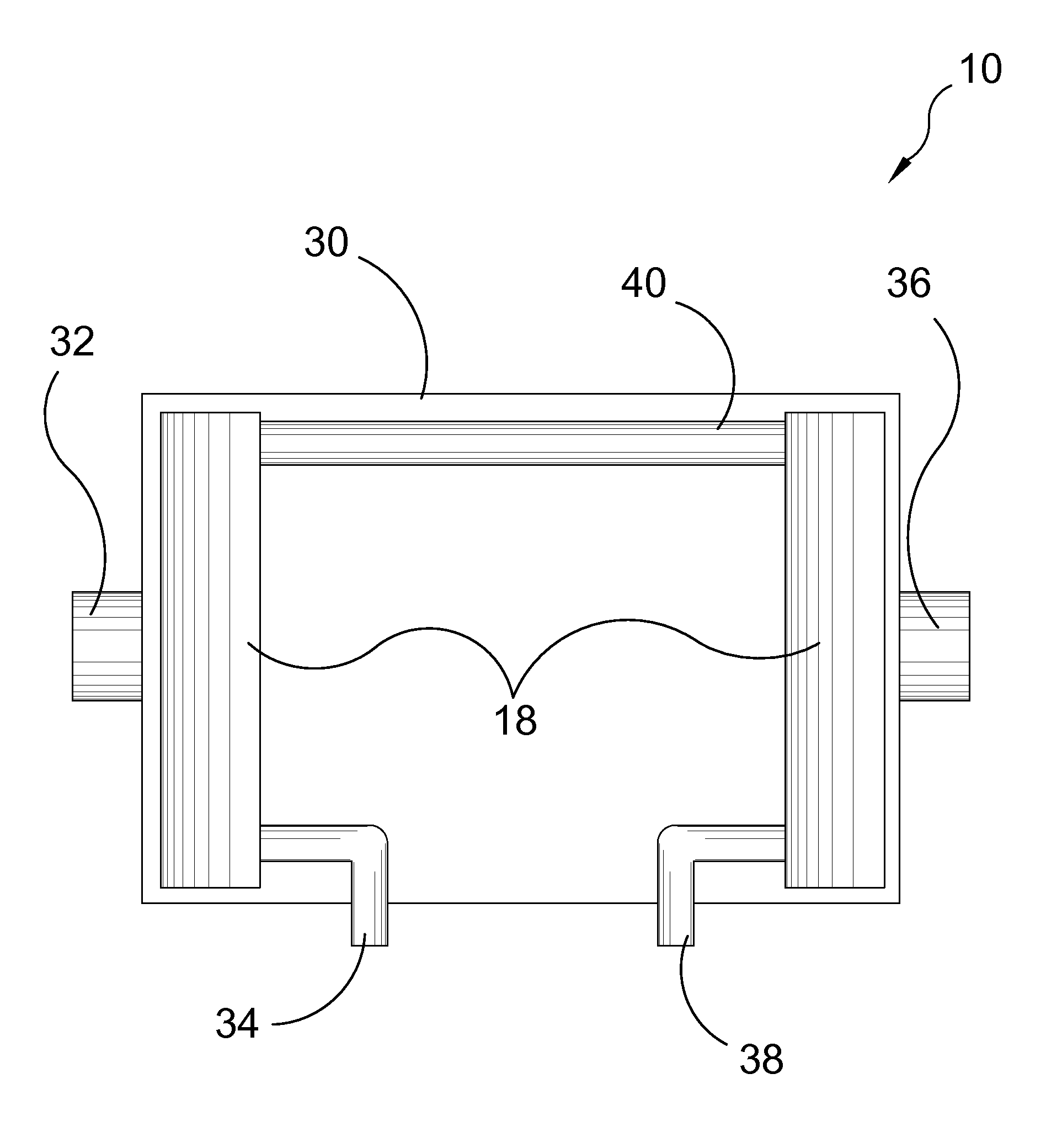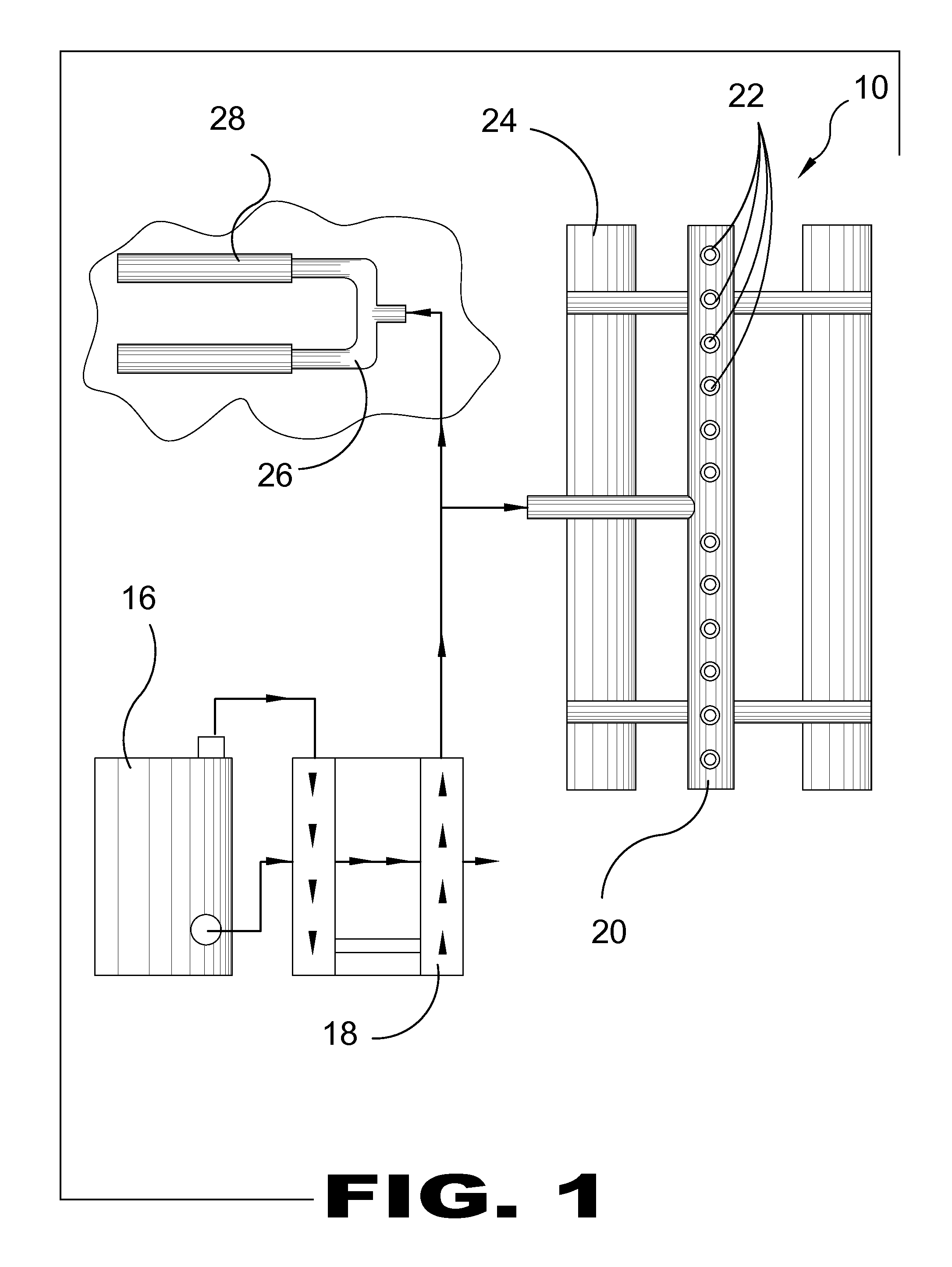Land Based and Pontoon Based Forced Air Thermal Evaporator
a forced air thermal evaporator and pontoon technology, applied in the field of evaporation systems, can solve the problems of more rapid evaporation than other problems, and achieve the effects of reducing environmental impact, reducing environmental impact, and reducing evaporation ra
- Summary
- Abstract
- Description
- Claims
- Application Information
AI Technical Summary
Benefits of technology
Problems solved by technology
Method used
Image
Examples
Embodiment Construction
[0073]The following discussion describes in detail one embodiment of the invention (and several variations of that embodiment). This discussion should not be construed, however, as limiting the invention to those particular embodiments, practitioners skilled in the art will recognize numerous other embodiments as well. For definition of the complete scope of the invention, the reader is directed to appended claims.
[0074]FIG. 1 is a flow diagram of both embodiments of the evaporation system 10. The present invention is a land based and pontoon based forced air thermal evaporator 10. Shown is the waste exhaust heat 12 used to heat the outgoing air 14 from the air compressor 16 through an air to air heat exchanger 18 to the distribution header 20 in which the air / water mixture is disbursed into the atmosphere through the spiral cone nozzles 22. Also shown are the pontoons 24, the eductor 26 and the discharge pipe 28.
[0075]FIG. 2 is a top view of the primary heat exchanger 18 of the pre...
PUM
| Property | Measurement | Unit |
|---|---|---|
| heat | aaaaa | aaaaa |
| force | aaaaa | aaaaa |
| sizes | aaaaa | aaaaa |
Abstract
Description
Claims
Application Information
 Login to View More
Login to View More - R&D
- Intellectual Property
- Life Sciences
- Materials
- Tech Scout
- Unparalleled Data Quality
- Higher Quality Content
- 60% Fewer Hallucinations
Browse by: Latest US Patents, China's latest patents, Technical Efficacy Thesaurus, Application Domain, Technology Topic, Popular Technical Reports.
© 2025 PatSnap. All rights reserved.Legal|Privacy policy|Modern Slavery Act Transparency Statement|Sitemap|About US| Contact US: help@patsnap.com



